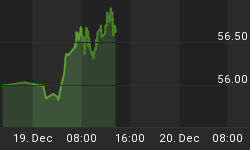Yale University market scholar Robert Shiller entered the bubble debate last week as noted in the Financial Times article Fears Grow Over US Stock Market Bubble.
The Nobel economics laureate told the Financial Times that his valuation confidence indices, based on investor surveys, showed greater fear that the market was overvalued than at any time since the peak of the dotcom bubble in 2000.
"It looks to me a bit like a bubble again with essentially a tripling of stock prices since 2009 in just six years and at the same time people losing confidence in the valuation of the market," he said.
Prof Shiller added there was no historical evidence for a link between interest rates and share prices. "You would think that when interest rates are higher people would sell stocks, but the financial world just isn't that simple."
He defended his now famous measure of valuation, often referred to as the Cape (for cyclically adjusted price/earnings multiple), which compares share prices to average earnings over the previous 10 years. This adjusts for the cyclicality of earnings.
Mr Shiller pointed out the fall in earnings in 2008 came as part of a severe recession. "Companies like to take write-offs right away during a recession. Then their earnings can recover from there. If I average over 10 years I don't see that as a problem. The average includes the actual losses that companies have made."
He said changing accounting standards could create difficulties for his model but added: "I think we're better off with changed accounting standards than if we ignored all the changes that happened since 1871."
Equity Allocations vs. Shiller PE

Michael Green at Ice Farm Capital emailed the above chart as well as the reference to the Financial Times article.
The chart shows equity allocations on the left axis vs. the Case-Shiller smoothed PE ratio on the right.
It is based on Ice Farm analysis using Shiller's and Fed Flow of Funds data.
Simple World
I had seen the Shiller piece before, but something caught my I when I read it a second time.
"You would think that when interest rates are higher people would sell stocks, but the financial world just isn't that simple," said Shiller.
I am a big fan of Shiller's model. However, the above statement makes no sense because quite frankly, what Shiller suggests is impossible!
Simple Math
Here's a simple economic truism: Someone must hold every equity share and every bond 100% of the time.
In aggregate, is impossible for people to sell stocks to buy bonds when interest rates are high (or vice versa). For every buyer of common stock there is a seller. Likewise, for every buyer of bonds there is a seller.
Sentiment can change (and pricing with it), but because of simple math, if there was an aggressive sentiment shift towards getting out of stocks in favor of high-yielding bonds, then bond yields would plunge.
At an individual level one can make changes, but at an aggregate level it is impossible.
Thus, the financial math is indeed simple. It's the timing of sentiment changes that makes it difficult for the individual and impossible for the aggregate investor.
Stocks vs. Bonds
Individually, one can sell stocks to buy bonds or vice versa. But what about the possibility that neither is the place to be?
Seven-Year Asset Class Real Return Projections
As of 2015-08-31 (posted on September 15), GMO sees things like this:

Purple highlights mine.
I like to repeat GMO's disclaimer so as I do not misrepresent the chart.
*The chart represents real return forecasts for several asset classes and not for any GMO fund or strategy. These forecasts are forward?looking statements based upon the reasonable beliefs of GMO and are not a guarantee of future performance. Forward?looking statements speak only as of the date they are made, and GMO assumes no duty to and does not undertake to update forward?looking statements. Forward-looking statements are subject to numerous assumptions, risks, and uncertainties, which change over time. Actual results may differ materially from those anticipated in forwardlooking statements. U.S. inflation is assumed to mean revert to long?term inflation of 2.2% over 15 years.
Care to Trade?
Care to trade US stocks for US Bonds?
If so, be prepared to trade negative 1.1% real returns in equities for negative 0.9% returns in US bonds.
If that were for a single year, no one would care. But that is the forecast every year for the next seven years on average.
In practice, it will not happen that way. For example, there easily could be a 40% plunge over the next year or so followed by a slow trudge sideways for three years then a rally back to where we are today over the next two years.
The possibilities are endless, that's just one example.
Note that GMO "real" returns assume mean reversion to 2.2% inflation over the next 15years. Nominal returns could be slightly better or worse, depending on how quickly the 2.2% inflation target is hit.
Pension Plan Assumptions
In general, pension plans assume 7.5% or so returns every years. Many pension plans, especially those in Illinois will be close to bankrupt if GMO's forecast is in the ballpark.
I personally think GMO is somewhat optimistic. I expect negative real returns for about 10 years.















